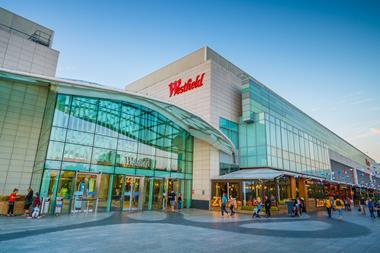A topical analogy might be to compare the choice facing electors on 7 May with the one confronting property investors. Which sector gets the vote for the next five years?

The two sectors neck and neck for support at the moment are industrial and office. ‘Alternatives’ are giving them a run for their money, but support is fragmented across the private rented sector (PRS), student housing, healthcare, hotels and green infrastructure. The Liberal Democrat property equivalent is retail, especially the high street and the giant supermarkets. Support has collapsed over the past five years, but does the sector deserve a fresh hearing?
The correlation between the strength of retail and the economy is one that has driven the performance of rents in the past. However, the retail recovery is not just about a sector responding to an improving economy, it is also about it responding to the impact of a structural change that has created a significant oversupply of space. The retail headwinds are not all internet driven. Other factors in the mix are: the growing demands for convenience; the desire for a different retail experience; willingness to shop vertically (ie up and down the value-to-luxury range); and social trends moving away from a consumption-fuelled, throw-it-away society.
Structural headwinds
Despite the improvement in the economy and the growing confidence and spending power of the domestic consumer, structural headwinds still make investing in retail feel like a contra-cyclical activity. Recent economic figures give hope for an improvement, but it seems that the area where volumes are growing strongest is household goods. Mike Coupe, the chief executive of Sainsbury’s, reportedly said consumers were spending their money on holidays, furniture and high-ticket electronic items.
This is not great news for high street retailers nor Sainsbury’s, come to that. According to the Financial Times last week, the consensus among retail analysts is that the growth in demand is not in any way strong enough to push prices and margins up. As Richard Hyman rather starkly put it: “The reason they are not (pushing prices up) is that the consumer will literally and metaphorically not buy it.” This is not a good lead indicator for rents to start rising.
A more positive stance is to forget about the national position and focus on the towns where a smaller recovery swing is required. If retail cannot get a majority, at least there must be some locations where the landlord has the balance of power. What, then, makes for a swing town?
As a starting point, I like to see some good basics in place: a broadly based local economy, skewed to sectors with an employment growth story, a strong educational platform, good infrastructure and a population that is increasing and living in the heart of the town. I also like to see a strong evening economy that can keep people in the town centre from 10am to 10pm. And the retail must be sized for the town or, at the very least, offer the prospect of redundant retail space being absorbed quickly for other uses.
Another aspect to understand is how the swing town fits into the omnichannel retail world. This is still taking shape but what is clear already is that bricks and clicks are not mutually exclusive. This has been recognised by many online retailers already, with a number, notably eBay and Amazon, putting down physical footprints. However, I suspect that retail parks and supermarkets, with local delivery centres, will have the edge over the high street due to their easier accessibility and ability to adapt the structure of the buildings to suit need.
Consumers also want convenience. We are now part of the real-time society where everything is immediate and convenience shopping is benchmarked against same-day delivery online. Our swing town needs to deliver a retail convenience that reaches out beyond the cash-rich, time-poor consumer market. This implies more flexible opening hours but also help for the discerning vertical shopper who is looking for convenience and value. The connected retail location is able to capitalise on the proliferation of the smartphone to do this.
From an investment perspective, a swing town does not have be the finished article at the time of investing. Plenty of hard work in canvassing the local community and their representatives to make the required changes can produce dividends. The repositioning of a town centre requires an over-arching masterplan that can often be hindered by the typically fragmented ownership of high streets.
A tool that in my view is not appreciated fully by investors is the Business Improvement District, which offers a way to bring local businesses together and provide a source of finance to support initiatives via a rates supplement. The road ahead for retail is going to remain challenging and it does not get my vote for the majority of the portfolio over the next five years. However, I do not believe it deserves to be wiped out. There is definitely some talent there and I would vote to support some swing towns now there is positive momentum in the consumer sector. It probably goes without saying that a coalition with other sectors should diversify risk and improve the returns.
William Hill is director of Mayfair Capital Investment Management





























No comments yet